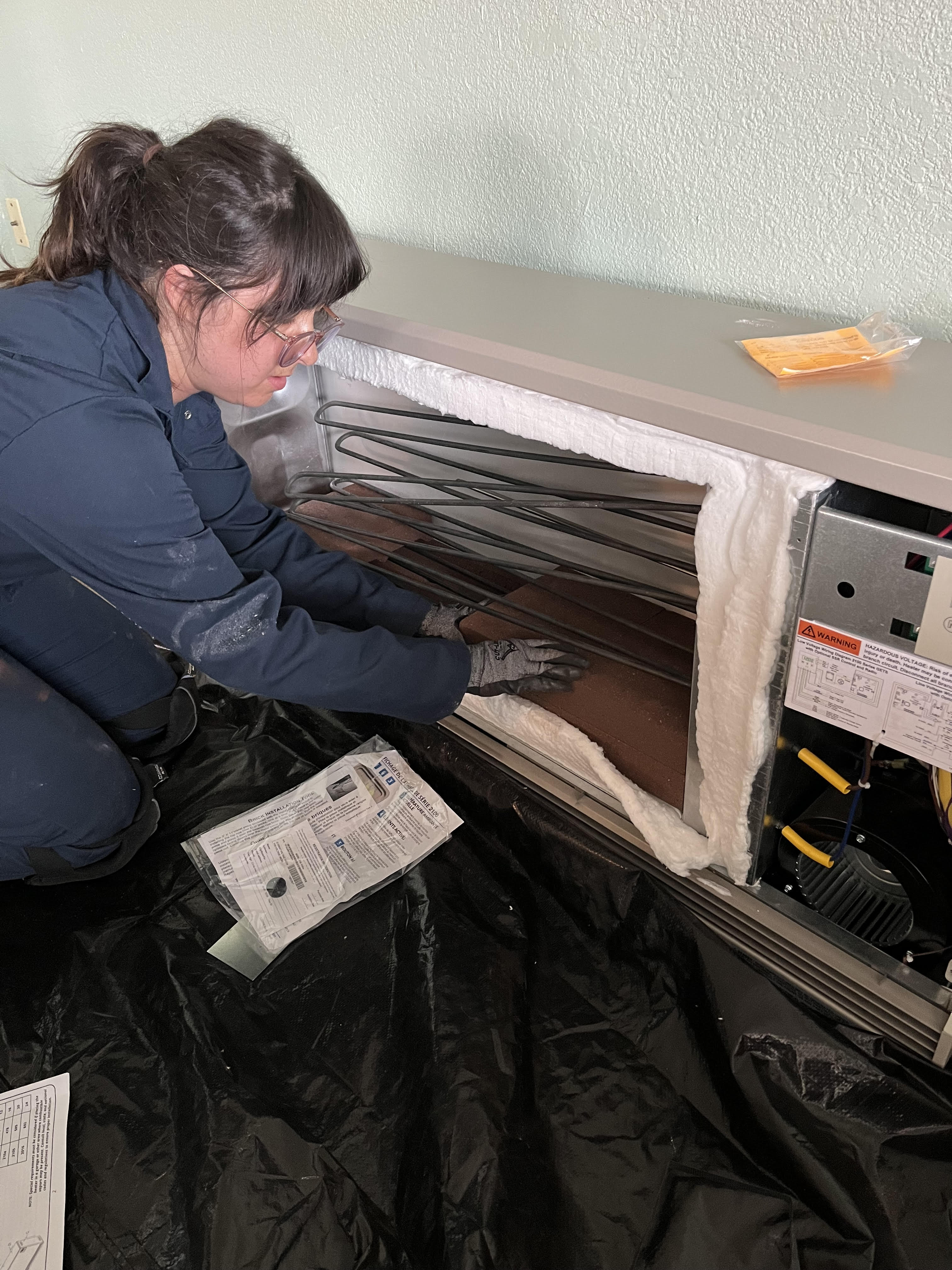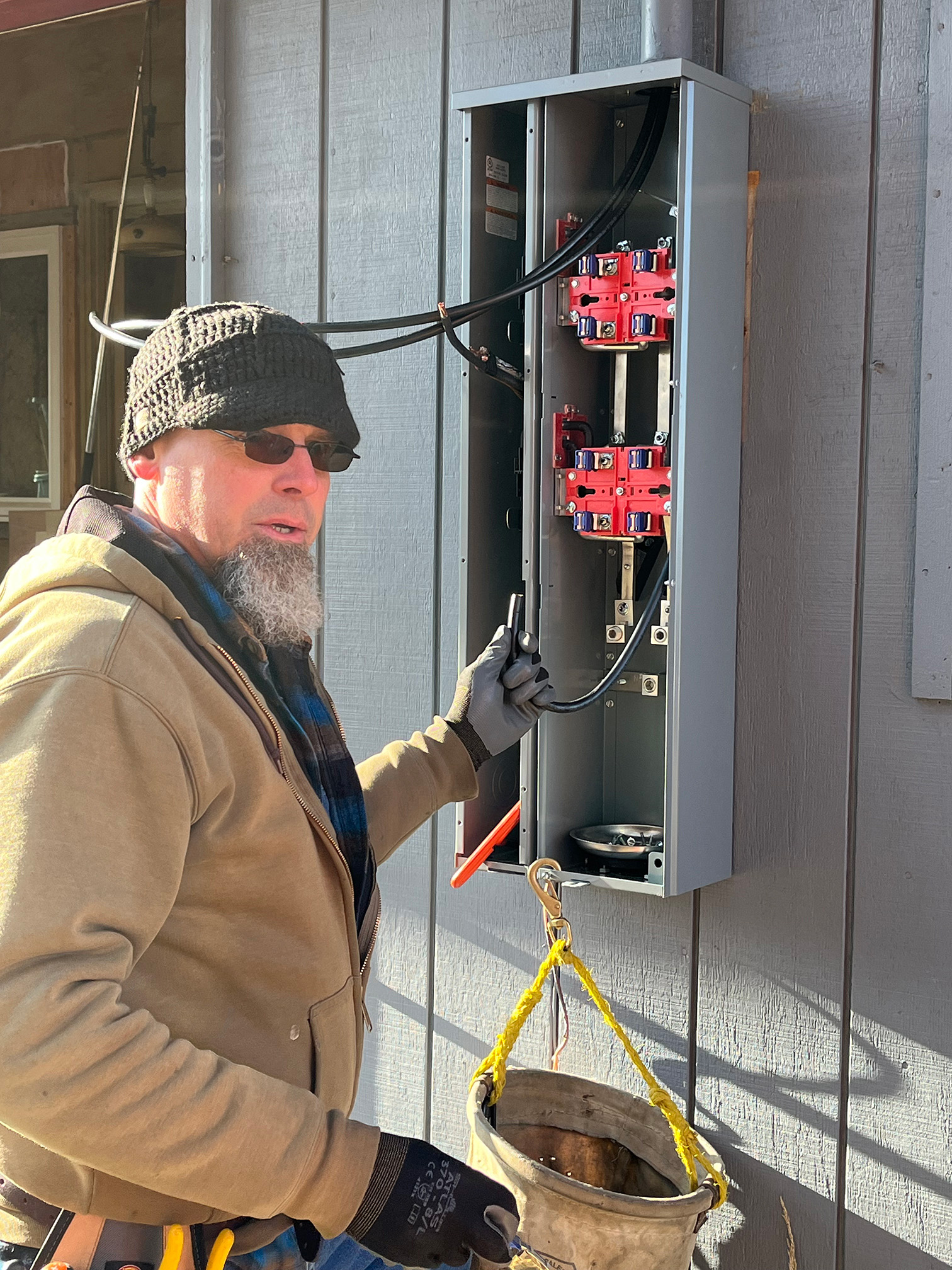Excess wind energy helps heat Kotzebue homes
November 12, 2024

Alana Vilagi stacks bricks around the electric resistance elements of an electric thermal storage heater as she installs it in a Kotzebue home.
Four members of ACEP’s Reducing Fuel Consumption in Rural Arctic Communities project team recently installed seven electric thermal storage heaters, or ETSHs, in Kotzebue homes. These room heaters will be controlled and “charged” by Kotzebue Electric Association using excess wind energy. Homeowners can turn on an electric fan to extract heat from the device.
Dominique Pride, Alana Vilagi and Mark Masteller installed the 145-lb heaters, then loaded each with 440 pounds of specially designed bricks that closely surround the resistance heating elements. Rob Bensin worked with KEA staff to separately meter each ETSH and performed the final wiring inside each home.
A major component of this project is to study the economics of using excess wind energy through an ETSH to displace space heat provided by heating oil — currently running about $8/gallon in Kotzebue. Six heaters were installed in homes, and a seventh was placed at KEA to allow their staff to better understand the installation and performance of an ETSH.

Rob Bensin installs a dual meter to support an electric thermal storage heater for a home in Kotzebue.
In another phase of the project, project partner Rural Action Community Action Program will soon weatherize eight of the subject homes. Fuel use has been monitored in all homes for the past year, and the team will compare fuel use for homes that receive weatherization, an ETSH, or both, with the control group.
This project, made possible by the support of KEA and community participants, is funded by the National Science Foundation Navigating the New Arctic Award.


